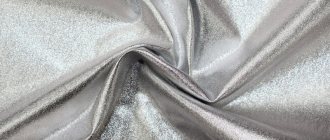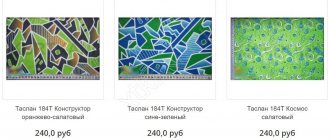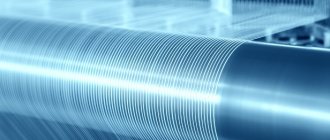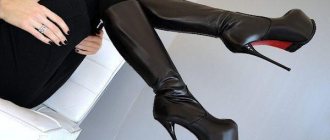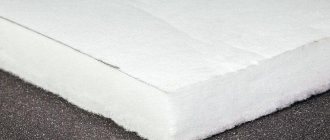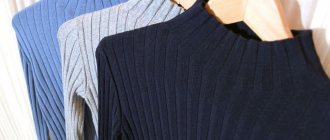Status, sophistication and the absolute effect of handmade work - today we will talk about what luxury looks like, embodied in fabric. For a long time, jacquard was considered an attribute of royalty and those close to the court. Imitating tapestry patterns, it looks great and retains this property for a long time. With the advent of the industrial method of manufacturing this fabric, it has become much more accessible, but it still remains a very sophisticated solution, no matter what its use is in question.
First, let's figure out what jacquard fabric is. This is a large-patterned double-sided material formed by a special interweaving of hundreds of weft and warp threads. The complex structure of the fabric and the multi-stage technique of its production make it possible to achieve a stunning effect of a relief pattern. Even plain fabric looks incredible, but jacquard fabrics with threads of several shades are more often produced. Due to the fact that threads of different colors differ from each other in composition and properties, the image is multi-level, with numerous color transitions. This way, on a loom, without subsequent dyeing, you can get a very expressive material, which differs from fabrics with simple weaving, which are decorated with a printed design.
There is also a technique for applying a pattern to the finished jacquard fabric - this is necessary when the composition includes fibers with completely different characteristics, for example, cotton and polyester.
History of fabric
The French researcher and innovator Joseph Marie Jacquard/Jaccard invented an industrial method for producing jacquard fabric, or rather, created a special machine for its production. This device could weave pre-set complex patterns, and it was much easier than manually arranging the threads according to the pattern of the design. A strict sequence of work on the pattern was created separately for each pattern, and was fed to the machine using special perforated cards with holes, with the help of which the device understood when to perform which operation. The Frenchman's invention was generously rewarded by the then government of the country; a monument was even erected to him in Lyon.
The fabric was named after the discoverer of this method, which greatly simplified and reduced the cost of expensive production. Therefore, the name has no translation; in English it is written as jacquard, not gakkard.
What kind of dress can be made from jacquard fabric?
A jacquard dress can be absolutely anything:
- sheath dress;
- style with a voluminous skirt;
- dress with a tulip skirt;
- wedding dress;
- wraparound model;
- pipe shape;
- cut like a shirt.
Outfits made from cotton jacquard look very elegant, so they will be more appropriate at official events: holidays, receptions, celebrations. But with skillful combination, such bows can also be used in everyday style.
How to make a skirt from a dress
How to sew a full skirt
What is jacquard made from?
In the old days, fabric with woven patterns was made from natural fibers - in most cases, these were cotton, linen, wool and silk. Nowadays, such materials from raw materials of natural origin are also produced, but a significant part of the items of modern weaving factories are fabrics containing synthetic fibers. We are accustomed to the fact that natural fibers are valued much higher than artificial ones, but the addition of lycra fibers to jacquard fabric makes the material elastic, breathable and easy to use and care for.
At the same time, there are ways to reduce the cost of the material. One of them is the technology used to produce thermojacquard. How does it differ from the classic one? The creation of patterns here is entrusted to thermal printing using a hot press. At the same time, no one argues that an embossed pattern woven using traditional methods looks completely different.
Types of jacquard
Are you wondering why the bedspread is called jacquard? This fabric is patterned like a tapestry. But tapestries have long been woven by hand. It was only at the very beginning of the 19th century that the Frenchman Jozeph-Marie Jacquard invented the loom. He mechanically intertwined even and odd threads, moved the shuttle, and wove the design into the base of the fabric. The original fabric with a large, elegant pattern was named after the master.
The classic canvas consists of natural cotton fiber. The thickness of the threads and their density allow you to add both synthetic and mixed yarn. The product itself can be from thin, almost airy, to very dense.
These are mainly colored bedspreads, but lovers of a laconic, monochromatic style will also find jacquard textiles for themselves. Penumbra, convex images, ornate patterns create interweavings of threads of different thicknesses.
The bright color and pattern of jacquard fabric are obtained in two ways:
Articles on the topic (click to view)
- Fences for parking lots and parking areas
- Selection of reinforced concrete columns
- How to secure a sheet to a mattress: ideas and tips
- 5 ways to make your interior more expensive
- Cleaning upholstered furniture
- How often should bed linen be changed?
- Is it possible to wash a sheep's wool blanket?
- more expensive - pre-dyed colored threads;
- cheaper - by applying a color pattern to the finished canvas.
Popular types of jacquard fabric:
- jacquard wool. Available in two colors. A bed cover made from it is very light, warm, with healing properties, as it is made of natural wool;
- jacquard-silk. Consists of natural or synthetic fiber - light, weightless, almost airy. Suitable for thin bedspreads with sophisticated designs;
- jacquard satin. The fabric is shiny, double-sided, silky to the touch, smooth. Used for sewing bedspreads, bed linen, curtains - durable, with bright colors;
- jacquard-satin. Made from natural cotton with a double-sided pattern. The fabric is easy to care for and does not wrinkle. Used for kitchen textiles and bed linen;
- jacquard stretch. Lightweight, breathable material suitable for sewing clothes. Stretch is practically not used for coverings, since the fabric stretches easily and the shape is not maintained.
Jacquard fabric, which includes matte threads of silk, viscose, and satin, changes its color under different lighting conditions and shimmers, creating a “chameleon effect.” Coverings made from such material create an extraordinary, magical atmosphere in the room.
What types of jacquard bedspreads are there?
Before purchasing, be sure to determine its size; think about how it will lie on the bed; where else will it be used? It is also important to know what types of products there are and what you should pay attention to when purchasing.
The parameters of the bedspread depend on how you plan to cover the bed with it:
- according to the European version - tucked in on all sides of the mattress;
- according to the classic one, when the parameters of the cover are 15 cm larger than the size of the mattress, ideally Euro size;
- according to the eastern version, when the product goes down to the floor on all sides.
Determine the required size based on the chosen method.
Jacquard bedspreads are more often made from natural fabrics than mixed ones, although they always contain cotton threads.
According to the sewing method, there are simple and quilted - depending on the number of layers of the product.
A simple jacquard pattern consists of one layer of dense fabric. The relief of the pattern is clearly visible on both sides. The product has no frills, the tailoring is simple, but it looks very decent.
The quilted bedspread has three stitched layers, where the front is made of jacquard fabric, the back is made of satin or polyester, and a layer of synthetic padding is laid between them. To prevent the filler from moving inside, it is attached with a stitch to the cover. Threads matched to match create beautiful geometric - straight or curved shapes. Piping, flounces or ruffles are sewn along the edges. This model is often used as a light blanket. But it looks very rich and looks better as a throw on a bed or sofa.
What is sewn from different types of jacquard?
What types of jacquard fabric are considered the most popular and actively used in the textile industry?
Satin is a type of material based on cotton fiber, sometimes a little synthetic is added to achieve practical properties. The fabric is made primarily for sewing comfortable bed linen. Satin can be not only white, but also colored.
Cotton jacquard is also a cotton fabric; lycra is often added to its composition. There are clothes and furniture. Considering the thickness and texture of the resulting material, it can be used when sewing clothes (jacket, coat, raincoat, blouse, dress, and other clothing models are very stylish and noticeable). To do this, you should choose a suit or dress option. An excellent use of cotton jacquard will be decorative textiles in home interiors and upholstery materials for furniture. It is hardly possible to find more elegant interior items than chairs or a sofa with woven upholstery. A bedspread with such a pattern will not leave connoisseurs of the classics indifferent.
Stretch jacquard is a semi-synthetic or synthetic material with excellent stretch and excellent breathability. This fabric is most often used for clothing - trousers and suits are also made from it. Another popular area of use is orthopedic mattresses; quilted jacquard is used here.
Satin jacquard is a curtain and decorative fabric, the main raw material for which is polyester. It is optimal for making bedspreads; things such as curtains, blankets and decorative textiles are sewn from it. The fabric does not wrinkle at all, does not shrink after washing in the machine, and caring for it is reduced to minimal actions. Even a tablecloth for banquets and feasts can be made from satin jaquard fabric.
There is also knitted jacquard - warm clothes are sewn from it, including accessories for autumn and winter. It consists of natural and synthetic fibers, has a special softness (soft), and is characterized by a less complex pattern.
What to sew from jacquard
- Double jacquard-satin made in Italy, made from natural cotton, is a common solution for sewing bed linen. A special feature is a double-sided relief pattern. The fabric is aesthetic and easy to wash.
- The attention of brides is attracted by the silk or viscose version with a charming floral pattern. It is also recommended to buy this type of jacquard for making lingerie, home clothes, and bedding.
- Jacquard knitwear is ideal for sewing stylish voluminous sweaters, suits, and demi-season clothing. The products are not deformed, strong and durable.
- Silk satin jacquard is an expensive, elegant fabric used for interior decoration. Synthetic jacquard is more affordable. Undemanding and practical to care for.
- Comfortable and beautiful clothes are made from stretch jacquard. Thanks to the properties of elastic fibers, the products “breathe” and fit well to the figure.
How to properly care for jacquard?
If you have acquired a stylish item made of expensive jacquard (silk or another option), it is better to entrust its care to specialists. At the same time, fabrics of the middle and lower price segments, despite the fact that they are made using similar technology, do not lose their properties when washed and cleaned at home. Literally not a single characteristic suffers after correctly performed manipulations. Remember a few important points!
- Bright jacquards (black, yellow, cornflower blue, red and others) should not be in contact with direct sunlight, and they are also afraid of thermal effects.
- Avoid creases when drying and storing items made from jacquard materials.
- To prevent the structure of the fabric from being damaged, do not rub or clean any stains from the surface with serious mechanical force.
- Jacquard with a pattern can be washed at low temperatures with delicate detergents.
- Can be squeezed out in the drum of a washing machine.
- Ironing is only allowed from the inside out!
Do you want to purchase such fabric to sew new things from it for your wardrobe or interior? You will be surprised to see what texture jacquard can have! In our online store you can find fabrics for every taste - from jacquard lining with thermal printing to exclusive offers. At the same time, the range is rich in other types of textile materials - viscose, brocade, knitwear, half-linen, poplin and other fabrics that are so appropriate in the summer and throughout the year. In the catalog on the website you will find hundreds of items with photos, each fabric has a detailed description. Reviews and other useful information can be found in our communities on social networks.
What is jacquard fabric for clothing
Jacquard is a very dense fabric with a relief pattern. Thanks to the special technology of weaving cotton threads, the finished canvas takes on a noble and sophisticated look. In order to create intricate patterns, the manufacturer can simultaneously use up to 100 threads of different shades.
Advantages of jacquard fabric
- The most significant advantage of jacquard is its strength and wear resistance. A product made from such fabric retains its original appearance for an unusually long time.
- A special dyeing method ensures that the colors will not fade after washing or lose their brightness in the sun.
- Does not require the use of special care products.
- Noble and high-quality patterns are always in fashion, so you don’t have to worry that in a couple of years the clothes will be put away in a distant drawer.
Disadvantages of jacquard for clothing
- Due to the twisting of the threads during the manufacture of the fabric, the finished version does not have elastic properties. If you have gained a couple of kilograms, your clothes will not stretch or fit your figure.
- The price is the most significant disadvantage of such a wonderful dress. If you are counting on buying a high-quality and durable designer outfit, you will have to fork out some cash.
- To reduce costs, some manufacturers make changes to production technology and allow artificial and natural threads to be intertwined. The price of such a product will be less, but all the useful properties will also decrease. To avoid being deceived, always ask about the percentage of synthetic fibers in the dress material.
IMPORTANT! Although jacquard is easy to care for, you need to be careful when using aggressive chemicals for washing so as not to ruin your expensive outfit.




